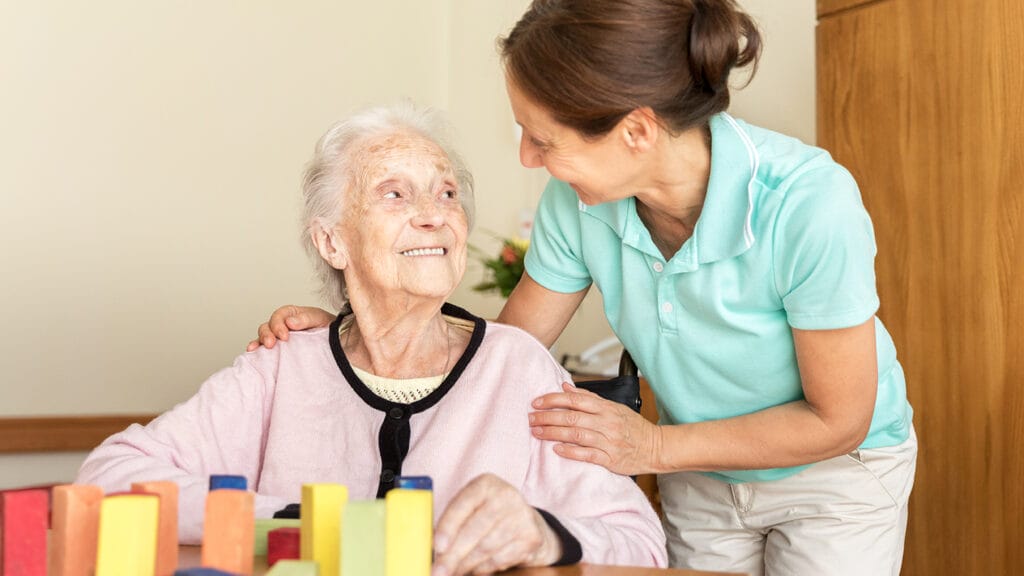
Assisted living communities are searching for innovative ways to provide the highest quality of services and care, attract and retain residents and staff and meet regulatory requirements — all while adjusting to challenging payment rates. The Internet of Things is poised to tackle these challenges and revolutionize the industry.
IoT will change the way you connect with, serve and care for your residents, and it truly will humanize the senior care experience. To realize this, we must put our emphasis on creating SMART communities.
What are SMART communities? They are groups of people who have committed to improving the quality of life for seniors, using IoT to enable: Safety, Mental/Physical Health, Activity, Rest and Togetherness.
So, what exactly is IoT?
Almost 20 years ago, Kevin Ashton, co-founder and executive director of the Auto-ID Center at MIT, said, “If we had computers that knew everything there was to know about things — using data gathered without any help from us — we would be able to track and count everything and greatly reduce waste, loss and cost.”
Fast-forward to today and that’s exactly what IoT does: It is the connection of devices to each other, people and things. This connection allows for the transfer of data that often are gathered through wearable or environmental sensors (which can combine microphones, video, memory, computing and communication devices) that serve as measurement tools. When married to analytics and machine learning — these data can drive significant insights and vast improvement.
And, how will IoT transform senior care?
 At Zanthion, we believe that SMART communities will shape senior services and care for generations to come.
At Zanthion, we believe that SMART communities will shape senior services and care for generations to come.
Every innovation we create focuses on enabling: Safety, Mental/Physical Health, Activity, Rest and Togetherness. Here are a few examples of how IoT impacts these areas:
Safety – IoT can predict, prevent and detect falls through real-time monitoring and gait analysis. It can work using responsive flooring, lighting, environmental enhancements and assessments, or by having sensors built into watches, fashionable clothing, jewelry or belt clips with sophisticated event analysis. IoT also can help prevent wandering by helping staff to determine the locations of residents who are inside and outside of buildings.Automated lighting and temperature control also can greatly increase safety.
Mental/Physical Health – Smart speakers or ergonomic earbuds can be used to play soothing sounds when a resident has an increased heart rate or is anxious to help calm him or her down. Sensors also can monitor conditions, such as blood pressure and oxygen levels, and notify stakeholders if there is cause for concern. Adult brief sensors are another great solution indicating a need for intervention with soiling events, which can help helps to prevent sepsis. Wireless temperature sensors are also effective ways to keep track of refrigerator and room temperatures, which can help reduce food poisoning and ensure compliance with state laws.
Activity –IoT can measure activity levels, oxygen levels, heart rate, blood pressure and bone density. Activity monitors are everywhere, but seniors require more targeted functionality that communicates changes in pace and gait, how fast a senior sits down or gets up, how many steps they take in a day, what their heart rate is at what pace, what their blood pressure is, etc. IoT makes this possible. It also can inform seniors when they need to give their knees a rest or drink more water.
Rest – Accelerometers can be affixed to the legs or backboard of beds to recognize when a resident has gotten out of bed, rolled out of bed or left the bed at night and not gotten back to bed. These take the place of frustrating bed exit alarms. New wireless oxygen and heart rate monitors can also trigger soothing music be turned on to change breathing behaviors at night when connected to IFTTT (If This Then That) and an Amazon Echo.
Togetherness – Connectivity is the core principle of an improved senior care society. IoT can connect residents to each other, staff or loved ones. It can keep everyone informed about how the resident is doing, give peace of mind, and bring seniors and families together to engage. This improves quality of life for everyone.
SMART communities are the next generation of senior housing and care. IoT enables us to provide unprecedented levels of care at much lower costs and to retain customers, and it serves as a market differentiator with measurable results.
Simply put, IoT will become the most powerful tool we have to care for seniors.
Philip Regenie is CEO at Zanthion. Follow the company on Twitter at @zanthioninc.
McKnight’s Senior Living welcomes marketplace columns on subjects of value to the industry. Please see our submission guidelines for more information.




